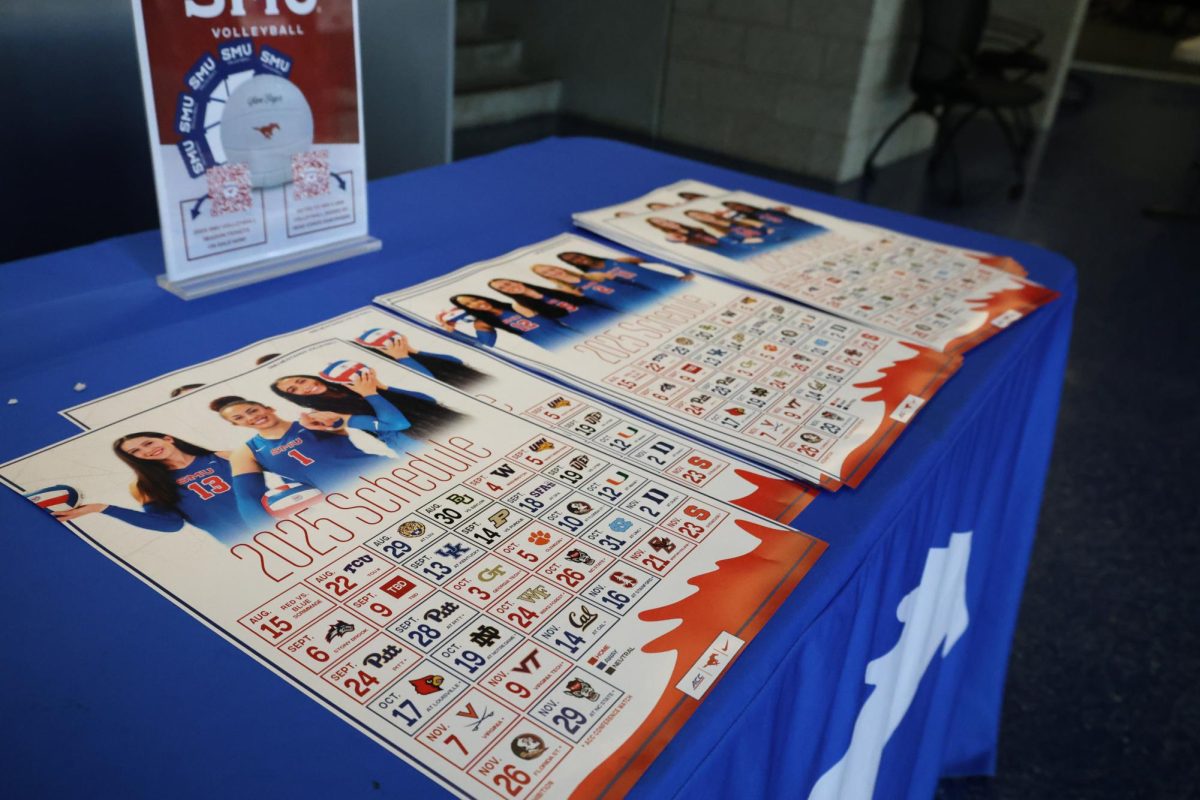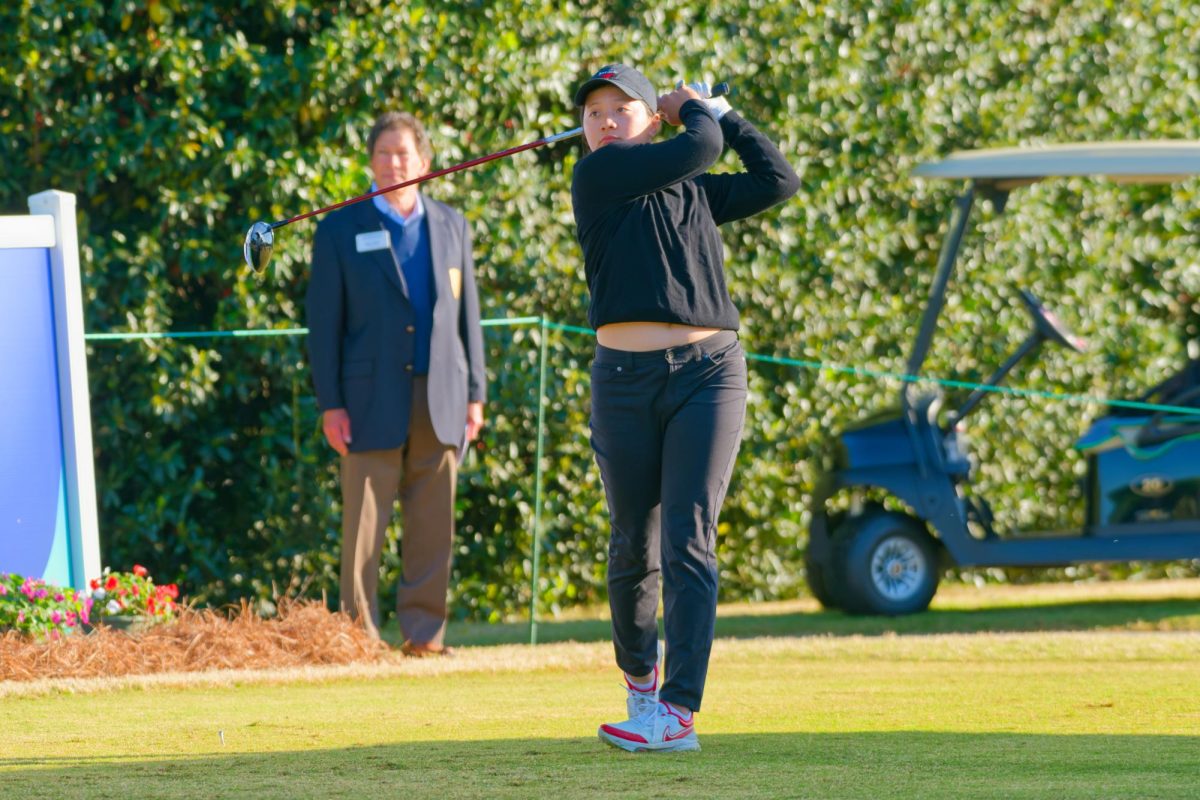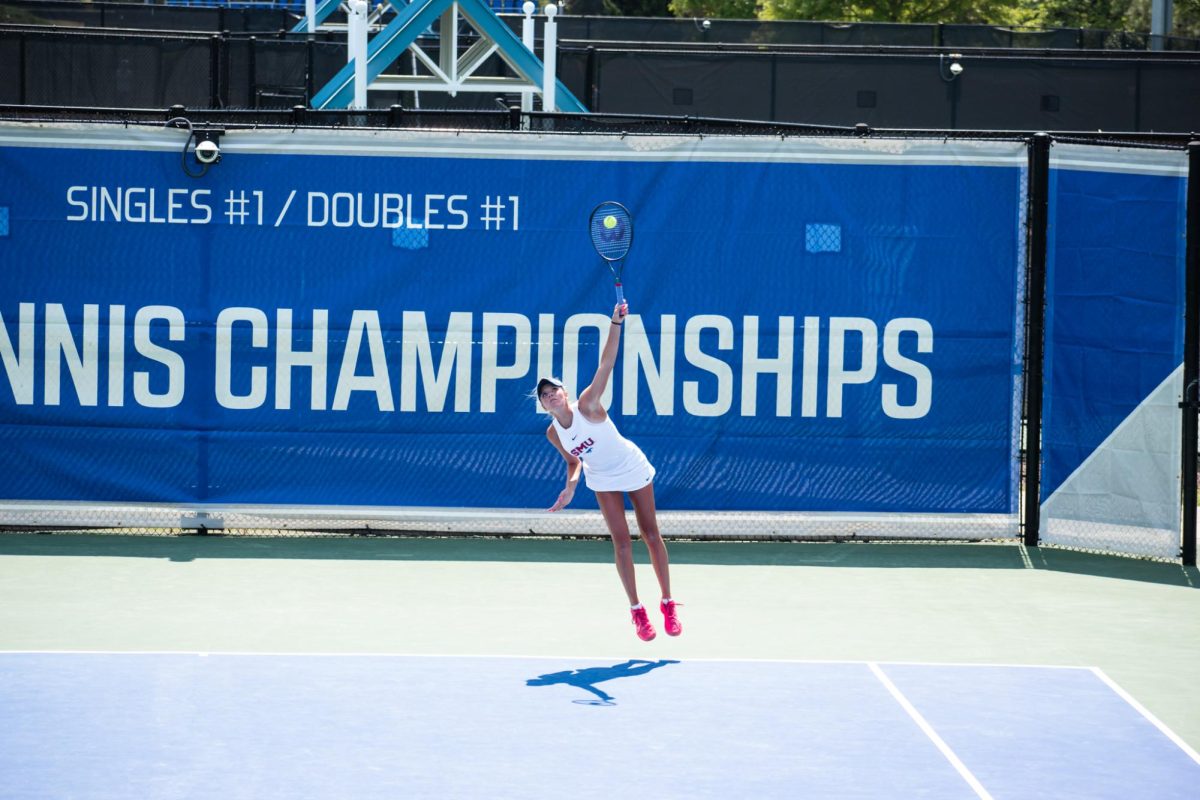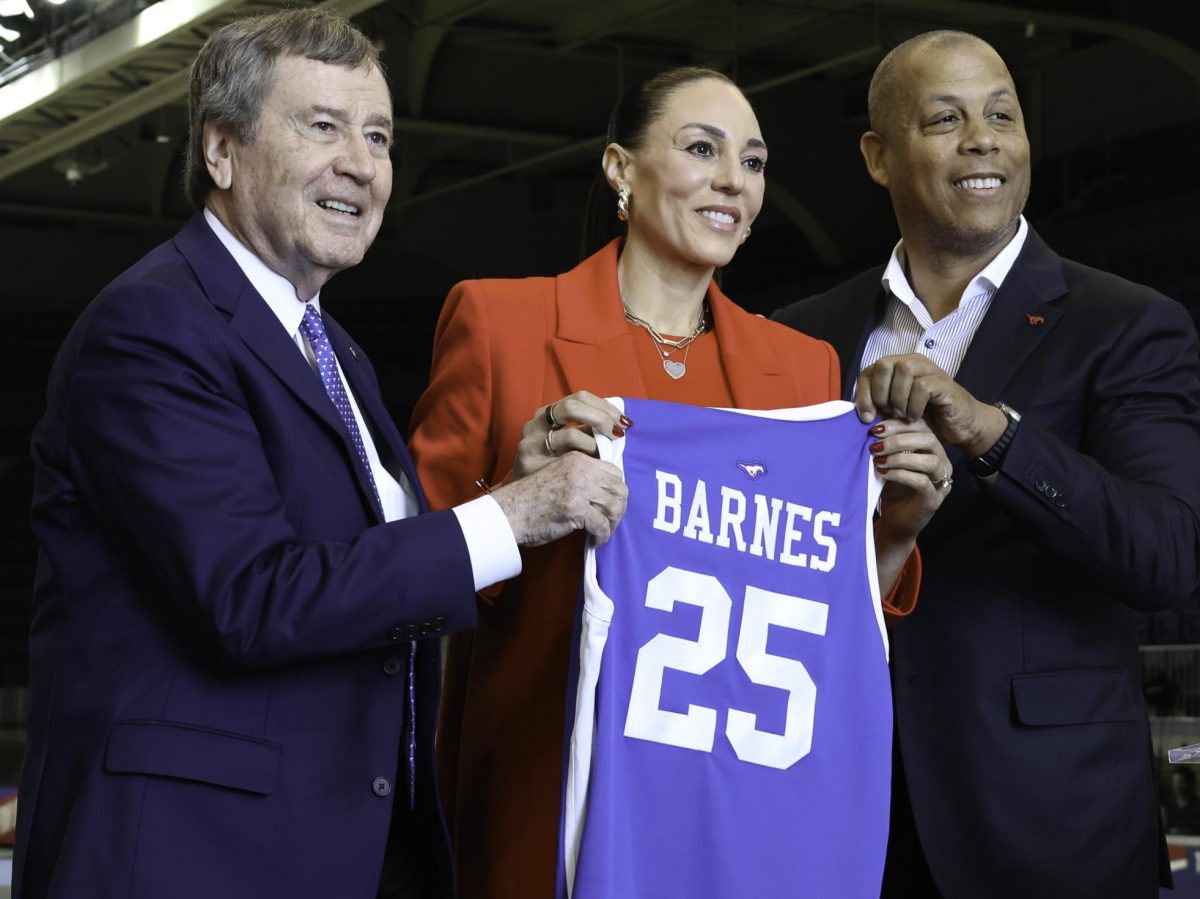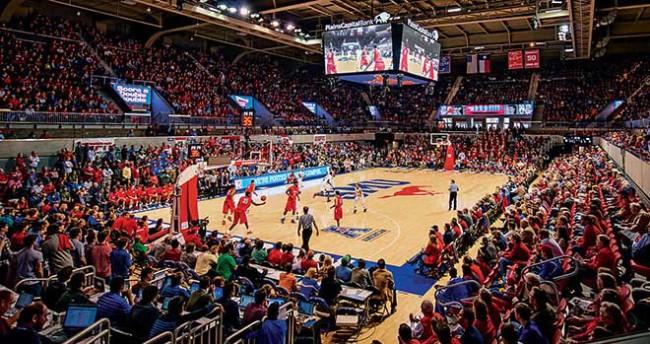
It’s almost midnight on a Sunday night in Winter 2014, and Hannah Claire Brimelow is sitting outside of the SMU box office, waiting for tickets to the upcoming SMU men’s basketball game to be released. The wind whips Brimelow’s face, but the cool January weather is no match for her dedication to the basketball team. She sticks it out through the night in order to secure her spot in Moody Coliseum’s student section, finding relief through a tent, blankets and lots of layers.
Brimelow and her friends spent 19 hours camped out in front of the SMU box office, before tickets were released at 7 a.m. the next morning. She and her friends were among dozens of dedicated students camping out for tickets.
“The weather and everything can get pretty bad, but you just have to persevere. It’s worth it,” Brimelow said.
It’s fair to say that SMU men’s basketball fandom has completely overshadowed that of the other sports on campus. As the team prepares for another successful season, SMU students say that the university is breaking the Southern “football school” stereotype.
An anonymous user on the social media application Yik Yak recently posted with what appears to be a growing attitude among SMU students toward SMU’s football and basketball teams.
“This school is not Southern at all. Everyone hates football and loves basketball. Never thought I’d experience this in Texas,” the user said.
That’s because at most Texas – and many Southern – universities, football is king. With its 0-11 record, the SMU team is considered by some a joke. Most students do not attend football games and those who do are usually gone by halftime.
The time-honored tradition of Boulevarding before football games is one factor in low attendance. Most students congregate around Dallas Hall lawn three hours before kickoff, where they eat, drink, dance and socialize. Three hours of continuous partying, potentially in the intense Dallas heat – not to mention any pre-games held before the Boulevard – and many students say they are just too tired to attend the game, especially to watch a team that doesn’t win very often .
Junior Tori Taylor has only attended one football game while at SMU.
“I’m usually way too exhausted to go to the game after Boulevarding,” she said. “I’d rather go home and take a nap instead of watch our team lose another game.”
However, the traditions now taking hold around basketball call for more involvement from the University’s student body. Besides camping outside of the SMU box office for tickets, students show their support for the team by the clothing they wear at the games. Dressing up in crazy costumes like lobster suits and elf costumes has gained popularity over the past couple years. Students with the most outrageous attire can often be seen on the Jumbotron at games.
Another basketball ritual involves members of the basketball team. When students wait outside of the SMU box office all night, Coach Brown and some of his players have been known to make an appearance for a casual, impromptu meet and greet. Coach Brown has also been known to bring coffee and donuts for the dedicated fans.
However, there are some SMU students who are not as enamored by the men’s basketball team. Senior Andrew Piepenburg is one of them.
“I hate basketball. Never understood it, it’s just not my sport,” he said. “Hell – I’d watch golf over basketball.”
Morale has also shaped basketball and football culture at SMU. Students are more apt to favor a basketball game with an optimistic, competitive vibe, instead of a football team with an unattractive record and dismal atmosphere.
Both the football and basketball teams’ records influence the school’s morale and sport culture.
Paul W. White, a freelance journalist who specializes in Texas sports and politics, credits the bad morale to the NCAA death penalty given to SMU’s football program in 1987. The death penalty cancelled the university’s program for the remainder of the year and only permitted away games in 1988. Additionally, 55 scholarship positions were lost, along with off-campus recruiting privileges and four full-time assistant coach positions.
White argues in a story on his personal website that since the death penalty, SMU football culture has taken a serious hit. White found that home attendance during the height of SMU’s football program in the 80s averaged 41,000 fans per game. He compares this to the 2008 attendance average, when the football team’s record was 1-11: a mere 20,000 fans. White attributes this disappointing fanbase to disinterest with an unsuccessful team.
Sophomore Alexandra Larkin is a student who doesn’t attend football games because of their record.
“I rarely go to the football games because I don’t want to see us lose,” she said.
However, SMU’s basketball has experienced an impressive increase of fans over the past year alone. According to the NCAA Men’s Basketball Attendance Division I Summary, SMU has experienced the fourth largest increase for average attendance between 2013 and 2014. The summary shows a 2,210 person increase in average game attendance, with a 3,443 average in 2013 and a 5,653 average in 2014.
Junior Jacqueline Stoner has been a fan of men’s basketball since her first year. Stoner said the Mustangs have seen a dramatic surge in basketball game attendance over the past couple years.
“When I went to games freshman year no one was there,” she said. “It’s cool seeing how much men’s basketball has changed since then. I love seeing our team do so well.”









